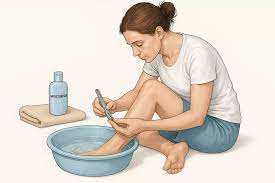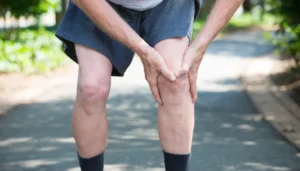Living with bunions can introduce new challenges to daily activities, especially when it comes to selecting footwear. A bunion is a bony bump that forms on the joint at the base of your big toe, causing the toe to point inward. This can make finding comfortable shoes a difficult task. Understanding how bunions develop and what features to look for in footwear helps you navigate your options with more confidence and support your foot health.
What Causes Bunions to Form?
The precise cause of bunions is not fully understood, but several factors are known to contribute to their development. Genetics plays a significant role; if your parents or grandparents had bunions, you may be more susceptible. Foot structure and mechanics inherited from your family can predispose your feet to this condition.
Certain factors increase the likelihood of bunions forming or progressing. These include:
- Heredity: Inherited foot types can make some people more prone to developing bunions.
- Foot Stress: Standing for long periods or participating in activities that put repeated stress on the feet may contribute to their formation.
- Footwear: Shoes that are too tight, narrow, or have high heels crowd the toes and place pressure on the big toe joint.
These elements work together, leading to the gradual misalignment of the toe joint. While you cannot change your genetic predisposition, you can manage other contributing factors, such as your choice of footwear, to support your foot’s natural structure.
How Do Bunions Affect Walking?
The presence of a bunion alters the structure of your foot, which can change the way you walk. The big toe plays a key part in pushing off the ground with each step. When a bunion develops, the joint becomes stiff and may be uncomfortable, causing you to unconsciously adjust your gait to avoid putting pressure on the area.
This adjustment can shift your body weight to other parts of your foot. Over time, this redistribution of pressure may affect your balance and stability. You might find that your walking pattern feels less natural or that other areas of your feet, like the ball of the foot, feel strained after walking. The primary goal is to find footwear that allows your foot to function as naturally as possible.
What Shoes Work Best for Bunions?
Choosing the right shoes can make a significant difference in your comfort level. The focus should be on finding footwear that accommodates the bunion instead of pressing against it. Look for shoes that give your feet enough room to function without restriction.
Here are some features to look for in shoes:
- Wide Toe Box: A wider, deeper toe box provides ample space for your toes to lie flat and reduces pressure on the bunion.
- Soft, Flexible Materials: Materials like soft leather or stretchable fabrics conform to the shape of your foot, preventing rubbing and irritation.
- Supportive Arch: Good arch support helps distribute pressure evenly across your foot, taking some of the load off the big toe joint.
- Low Heels: Shoes with a heel height of one inch or less promote a more natural foot position and reduce stress on the forefoot.
By prioritizing these features, you can find shoes that offer both comfort and support. The right pair will allow you to move through your day with greater ease, providing relief and helping to prevent further discomfort.
Consult a Specialist
If you are struggling with bunions and finding it difficult to manage on your own, seeking professional guidance is a positive next step. A podiatrist can assess your specific situation and provide personalized recommendations. They can offer tailored advice on footwear, supportive inserts, or other management strategies. Taking this step enables you to receive expert care and develop a plan tailored to your feet and lifestyle.














